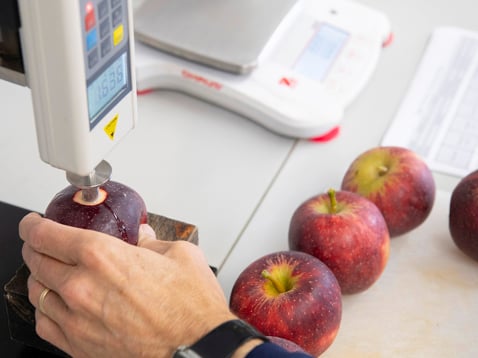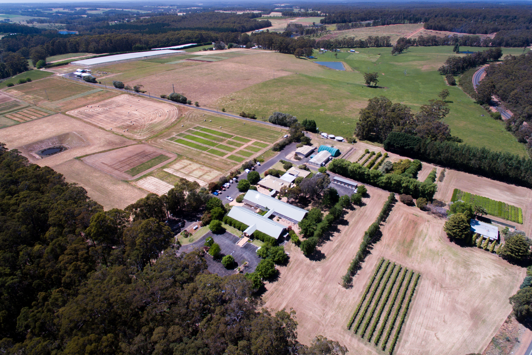
The Australian National Apple Breeding Program (ANABP) is internationally renowned due to the creation of many popular apple varieties which are preferred by consumers. We created the:
- Cripps Pink variety which is branded as Pink Lady®
- Cripps Red variety which is branded as SundownerTM / Joya®
- ANABP 01 (BravoTM / SolunaTM), which is our newest apple variety.
Our varieties are well known by consumers for their superior visual, textural and flavour characteristics, and are sought after in the marketplace.
History
ANABP has a long history with the WA Government, commencing apple breeding in Stoneville in the late 1960s. Since then, the main apple breeding operations have been moved to DPIRD’s Manjimup Horticulture Research Institute.
Apple breeding techniques
The ANABP employs conventional plant breeding techniques using cross pollination of apple flowers to produce seeds for germination of new apple trees.
The program produces up to 6,000 seedlings per year and currently has over 58,000 trees in evaluation at Manjimup. Due to ANABP’s long history, we have a number of selections in advanced stages of development. Researchers estimate that 1 in every 100,000 seedlings will be a commercial success.
The apple breeding process is long and extensive taking 20 years to create and test a new apple variety prior to commercial release. Our new selections are tested on various growing sites around Australia to understand their suitability to a variety of climates.
Genetic breeding techniques
Genetic and genomic tools are used to breed resilient, high performance, tasty apples that are profitable to grow. Recently, molecular marker technology is being employed to pinpoint desirable quality and disease resistance traits to breed Western Australian apples in 4 or 5 years less than the traditional 20year breeding timeframe.
Assessing apples
Apples are assessed for various quality characteristics including firmness, crispness, acidity, sweetness, storage performance and colour, while disease resistance traits cover tolerance to apple scab, powdery mildew and fire blight.
Apple resilience and climate change
ANABP develops varieties to meet the challenges of a changing climate with varieties assessed for suitability to a wide range of Australian growing conditions.

